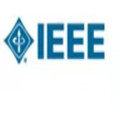High energy solar flares and coronal mass ejections have the potential to destroy Earth's ground and satellite infrastructures, causing trillions of dollars in damage and mass human suffering. Destruction of these critical systems would disable power grids and satellites, crippling communications and transportation. This would lead to food shortages and an inability to respond to emergencies. A solution to this impending problem is proposed herein using satellites in solar orbit that continuously monitor the Sun, use artificial intelligence and machine learning to calculate the probability of massive solar explosions from this sensed data, and then signal defense mechanisms that will mitigate the threat. With modern technology there may be only safeguards that can be implemented with enough warning, which is why the best algorithm must be identified and continuously trained with existing and new data to maximize true positive rates while minimizing false negatives. This paper conducts a survey of current machine learning models using open source solar flare prediction data. The rise of edge computing allows machine learning hardware to be placed on the same satellites as the sensor arrays, saving critical time by not having to transmit remote sensing data across the vast distances of space. A system of systems approach will allow enough warning for safety measures to be put into place mitigating the risk of disaster.
翻译:高能太阳耀斑和日冕物质抛射有可能摧毁地球的地面和卫星基础设施,造成数万亿美元的损失和大规模人类痛苦。这些关键系统的破坏将破坏电网和卫星,破坏通信和运输,导致粮食短缺和无法对紧急情况作出反应。本文提出解决这一即将出现的问题的办法,利用太阳轨道上的卫星不断监测太阳,利用人工智能和机器学习来计算从这种感应数据中大规模太阳爆炸的概率,然后通过信号防御机制来减轻威胁。现代技术可能只有能够以足够的警告执行的保障,这就是为什么必须确定最佳算法,并不断用现有和新的数据不断培训,以尽量提高真实的正率,同时尽量减少虚假的负值。本文利用开放源太阳耀斑预测数据对目前的机器学习模型进行调查。边缘计算的上升使得机器学习硬件能够与传感器阵列放在相同的卫星上,节省关键时间,不必将遥感数据传送到空间的很远的距离。一个系统方法将允许有足够的安全措施警报放在减轻灾害风险的位置上。




